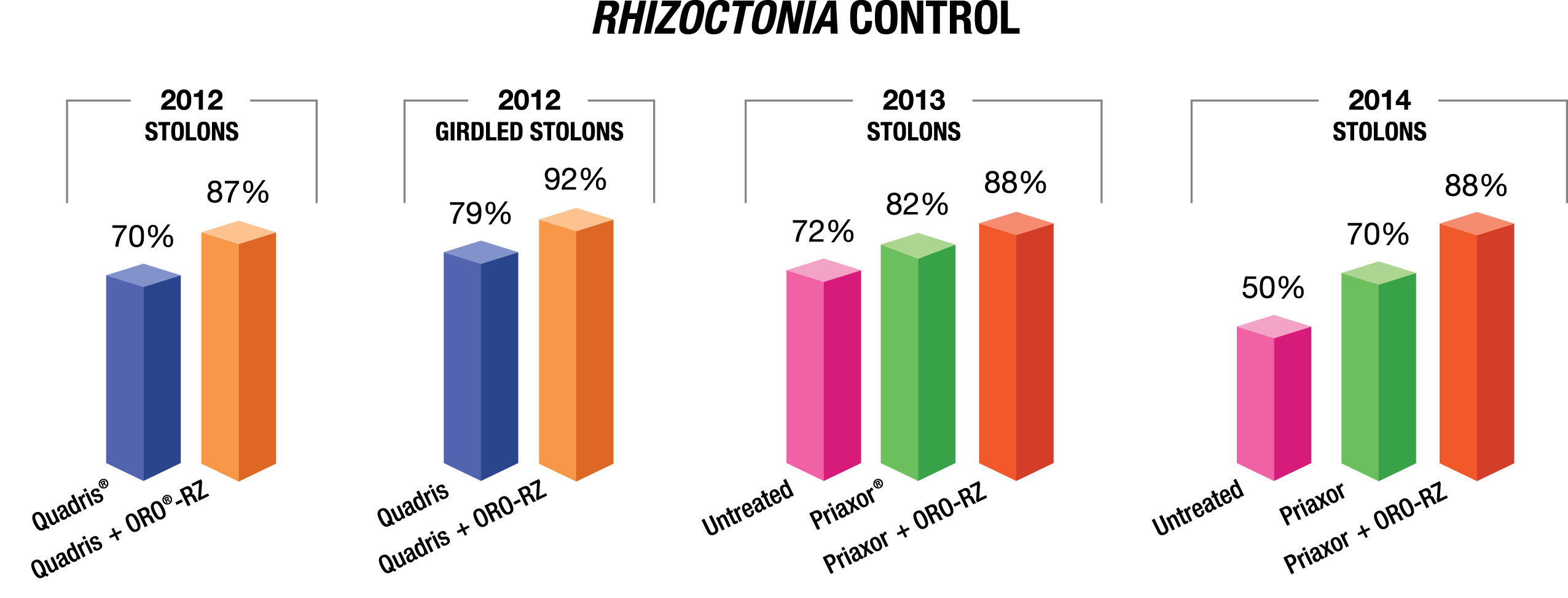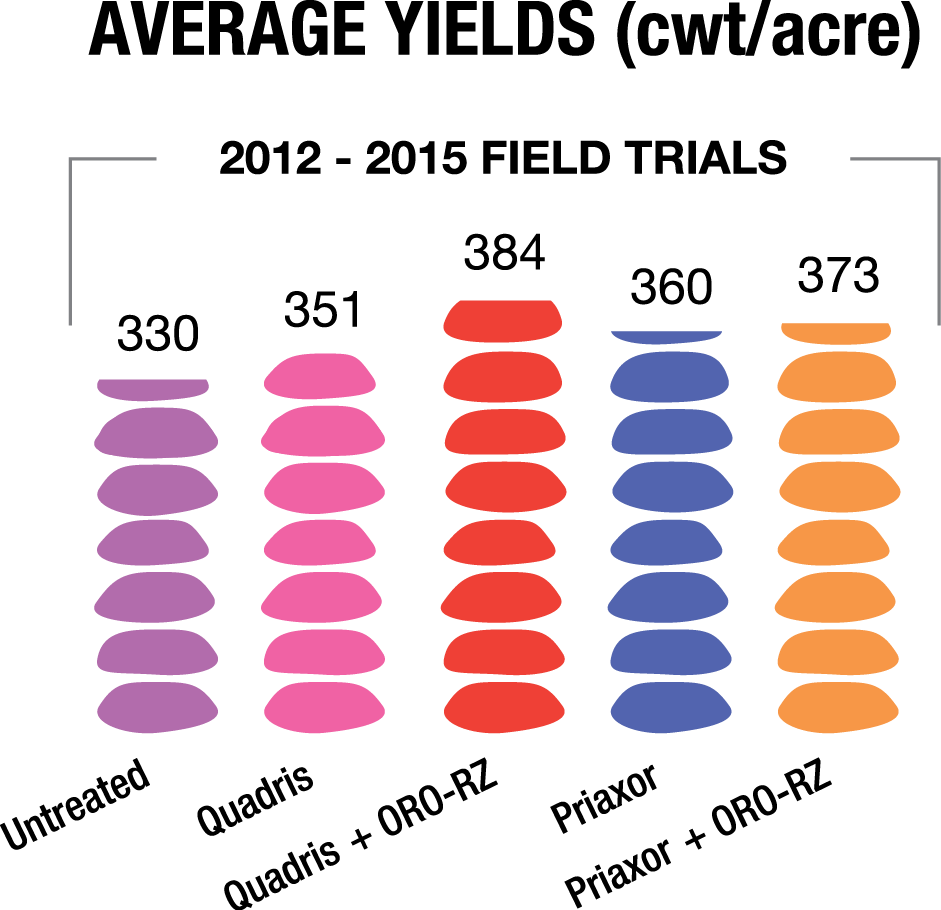This article appears in the March 2017 issue of Potato Grower.
Recognizing the presence of hydrophobic soils in your fields is not difficult. During a good rain or irrigation period, seeing puddles or runoff is a pretty good indication there is a problem with the infiltration of water in a field. Even patchy crop emergence can be a clue that you have hydrophobic soils. While runoff and a poor crop stand are serious issues that need to be remedied, what is happening below the soil surface can be just as serious and have a direct effect on the health, yield and economic return of a potato crop.
The main cause of hydrophobicity or water-repellent soil is the coating of soil particles with waxy organic compounds that result from the breakdown of plant residue or other organic compounds such as manure. Typically, coarse-textured, sandy soils with low clay content (below 5 percent) are more susceptible to becoming water-repellent. It has been found that water repellency only occurs in soils with less than 10 percent clay and that repellency is most extreme in soils with less than 5 percent clay.
Below the surface, pockets of the aforementioned wax-covered, water-repellent soil particles can cause uneven infiltration of rainfall and irrigation, resulting in poor germination, emergence, growth and, ultimately, yield. Similarly, a hydrophobic soil pocket will also prevent the uniform coverage and control of a soil-applied fungicide, herbicide or insecticide. With a fungicide or insecticide application, this makes the plant more susceptible to disease or insect damage; with a pre-emergent herbicide application, this would result in poorer weed control.
Adaptable Technology
Oro Agri has developed a way to combat water-repellent soils and their negative effects with an easy-to-use soil adjuvant. The company, which manufactures several foliar adjuvants, recognized the similarity between the water repellency of hydrophobic soils and the repellency of most plant leaf surfaces that impede the absorption of foliar-applied pesticide applications. Oro Agri’s patented OroWet technology, used in its foliar adjuvants, was developed to greatly reduce the surface tension of foliar sprays to overcome leaves’ repellency and to improve the speed and concentration of pesticide applications absorbed into the leaf. Oro Agri adapted this technology into a soil-applied adjuvant and, in 2016, introduced Oro-RZ.
From 2012 to 2015, independent third-party field trials were conducted on potatoes to test the theory that applying a soil adjuvant that contains the surface tension-reducing property of OroWet technology could help overcome water
repellency. This improvement in the uniform infiltration and distribution of a soil-applied fungicide application would, in theory, enhance the coverage of fungicide applications and result in better disease control.
The field trials compared the efficacy of Priaxor and Quadris fungicides, alone and in tank mixes with Oro-RZ adjuvant. The results, when averaged across the four years of field trials, showed the Oro-RZ plus fungicide tank mixes consistently provided better Rhizoctonia control than applications of the fungicides alone.

In addition to measuring Rhizoctonia control, the trials were taken to harvest, and yield data was collected for each treatment. Again, the Oro-RZ plus fungicide tank mixes outperformed the fungicides alone in delivering consistently higher yields.

A Versatile Tool
The ability of Oro-RZ to improve the efficacy of soil-applied fungicides also applies to pre-emergent herbicide control of weeds. Just as pockets of hydrophobic soil can prevent a fungicide application from providing its best disease protection, hydrophobic soils can also prevent a herbicide application from controlling weeds.
Hydrophobic soils prevent the formation of a uniform pre-emergent herbicide layer just under the soil surface to stop weeds from emerging. These gaps in the herbicide layer mean more weeds will emerge that now must be controlled with a post-emergent application, adding time and cost to weed control programs. But in four years of field trials from 2013 to 2016, the addition of Oro-RZ to pre-emergent herbicide applications for marestail control resulted in improved control of this tough weed. Just as with fungicides and Rhizoctonia control, Oro-RZ helped deliver more herbicide to its target versus using herbicides alone, boosting its performance and value to growers.